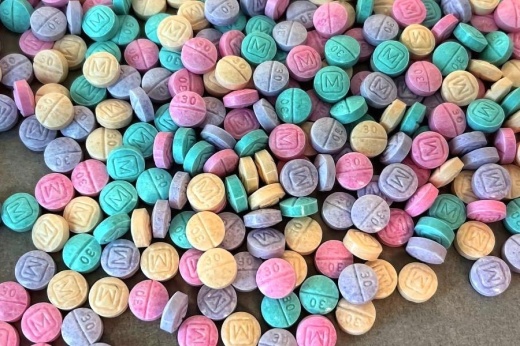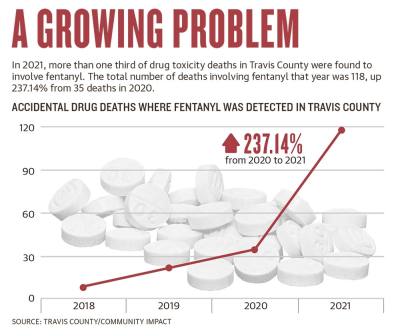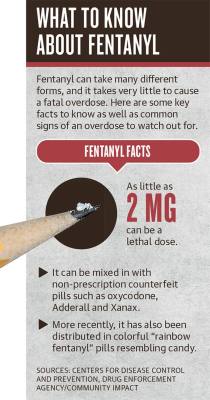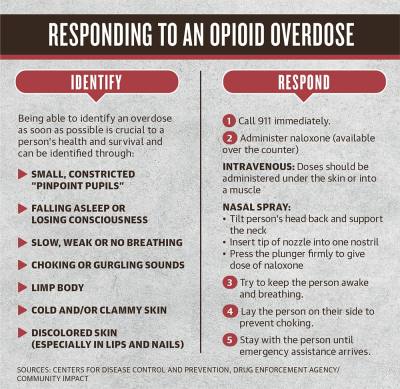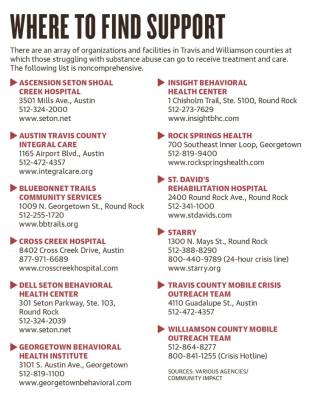Drug toxicity was responsible for 308 deaths in Travis County last year—more than any other cause of accidental death, according to the Travis County Medical Examiner’s Office.
In 2021, the county reported 308 overdose deaths, of which 118 were found to involve fentanyl, a synthetic opioid the Centers for Disease Control and Prevention says can be up to 50 times stronger than heroin and 100 times stronger than morphine. Of the 118 who died of fentanyl overdoses, 53 were between the ages of 14 and 30.
Jack Housworth is the lead substance abuse counselor at Bluebonnet Trails Community Services, an organization that provides support and treatment for those struggling with substance abuse in and around Williamson County.
He said in recent months, he has seen more and more young people—including teens and adolescents—overdosing on fentanyl.
“It’s absolutely in epidemic proportions,” Housworth said. “We’re hearing of or seeing kids dying every day.”
Housworth said one reason for the recent surge in fentanyl overdoses is that small but lethal amounts of fentanyl are appearing in a variety of controlled substances such as counterfeit pills and illegal drugs.
“We’re seeing fentanyl in methamphetamines; we’re seeing fentanyl in marijuana; we’re seeing fentanyl in cocaine and every pill that you can imagine,” Housworth said.
Response from schools
Area school districts are taking precautions to combat overdoses by promoting existing programs. Both Round Rock ISD and Hutto ISD are also ensuring campus police officers, nurses and counselors are trained in using Narcan.
Also known as naloxone, Narcan is a medication that can be used to reverse an opioid overdose if administered quickly.
“If we ever find ourselves in a situation, Narcan is kind of that last-case emergency life-saving tool that can give them some time until EMS arrives,” said Kendra Estes, HISD director of health and safety.
Both districts have enough of a supply of Narcan to equip all officers and nurses in secondary schools, officials said. Partnerships with local organizations such as Bluebonnet Trails and Williamson County EMS have played a vital role in allowing districts to obtain Narcan. Bluebonnet Trails used about $300,000 in COVID-19 relief funds in fiscal year 2021-22 year to purchase and distribute Narcan to school districts and police and fire departments.
“I can’t think of a single school district in Williamson County that we didn’t give it out to,” Housworth said. “We include Travis County and ... as far as Milam County.”
Nurses, officers and counselors in HISD planned to host a free training course Nov. 1, after press time Oct. 25, on spotting and responding to overdoses for school staff and administrators and members of the public.
While Narcan training has been one priority for districts, officials stressed that tools to identify and respond to an overdose are more of a last line of defense than a complete solution to combat fentanyl overdoses.
“Narcan is ... kind of the last-ditch tool, and it’s really everything that we do before that person finds themselves in that crisis that is really meaningful,” Estes said.
In keeping with that sentiment, districts are also focused on bolstering their communication efforts, ensuring students and parents are educated on the dangers of fentanyl to minimize the chances of an overdose occurring in the first place.
RRISD and HISD have both shared with students and parents resources that include information on the forms fentanyl can take, how much is a lethal dose and how to avoid accidentally ingesting fentanyl.
RRISD also has an online anonymous reporting portal through which students and parents can report any concerns directly to school officials.
“One of the things we want to do is encourage students, if they have friends that this could be an issue, ... they can report anonymously because we want to save kids. It’s not about getting them in trouble,” said Jenny Caputo, chief of public affairs and communications for RRISD.
Additionally, Caputo said the district is looking to host a public panel in the future with local law enforcement and families who have been impacted by the fentanyl issue to further spread awareness.
“The more education we can get out there—both to students so that they can protect themselves, their friends and peers, and to parents so they can just be on high alert,” Caputo said.
Addressing mental health
One more priority for local school districts has been supporting students’ mental health.Because fentanyl can be found in medications such as Adderall and Xanax not prescribed by a doctor—those obtained from others or purchased illegally, for example—Estes said a vital step in fighting fentanyl overdoses is to prevent students from relying on such drugs as a coping mechanism.
“One part of this approach is to never put individuals in a situation where they feel like drug and alcohol abuse is an effective coping mechanism for depression, anxiety or any other mental health issues they may be suffering from,” Estes said.
To that end, HISD has added several new mental health professional and counseling positions over the past year, adding to its existing resources for students and staff. Similarly, RRISD has a multitude of counselors and social workers and partners with several local support organizations to refer students who need help beyond what the district can offer.
With the combined efforts of local organizations and the school districts themselves, officials say they are hopeful they can curb the fentanyl issue before it grows any more severe.
“I’m also a parent, and it’s terrifying,” Caputo said. “We’ve seen the deadly effects right here in Texas, and we’re just trying to get in front of it.”




